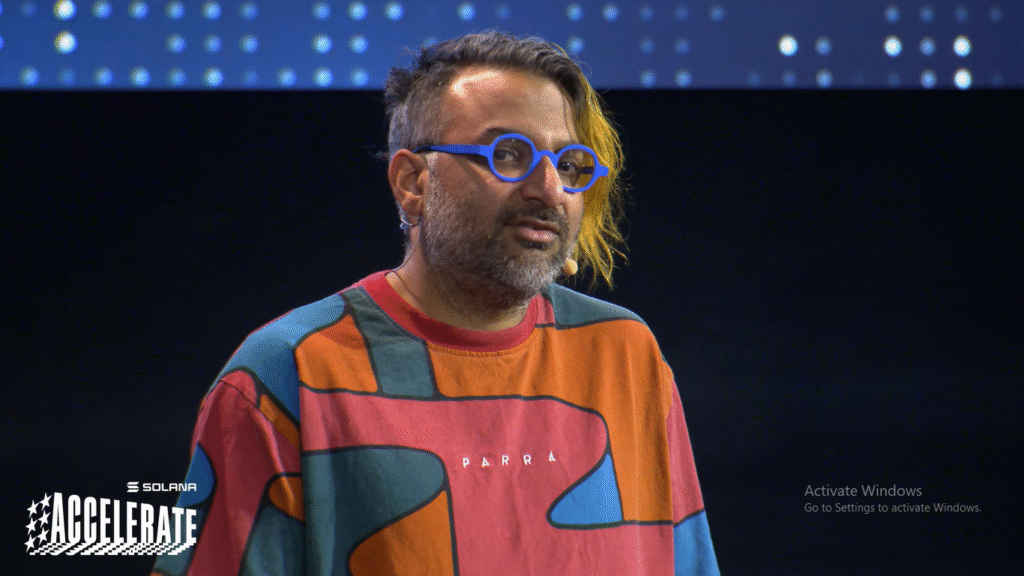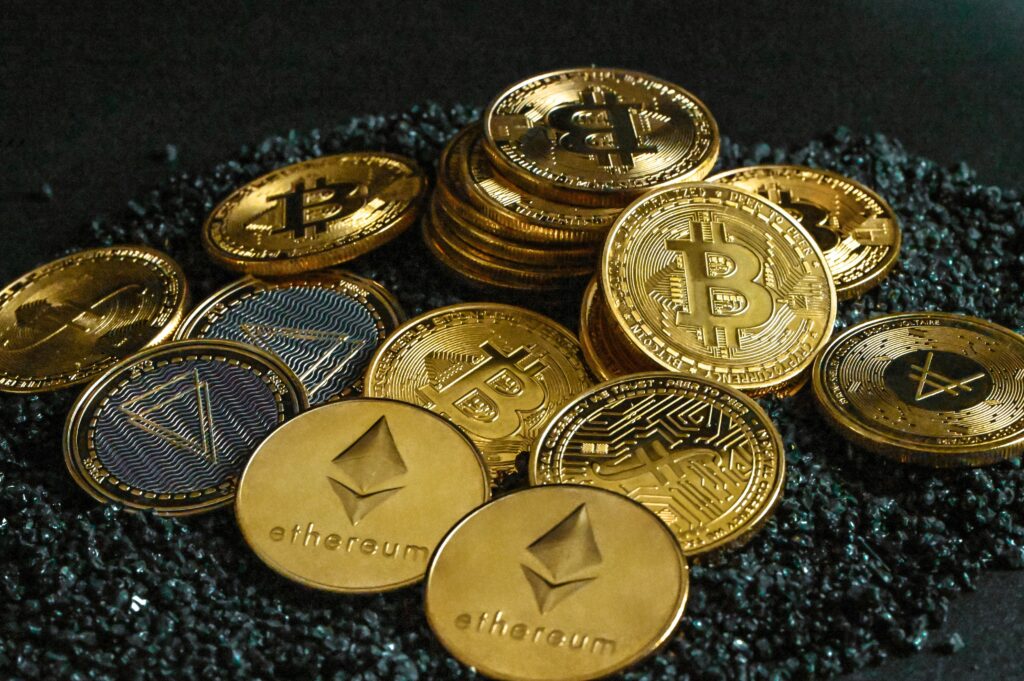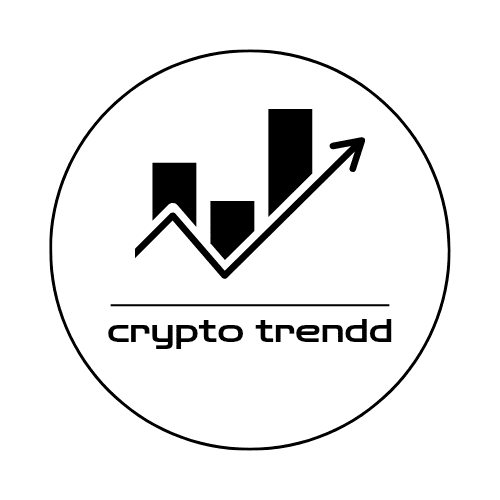Tarun Chitra Biography: Gauntlet Founder & Quant Genius Shaping Crypto’s Future

Introduction: Why Tarun Chitra Matters in Crypto
If you’ve been following the growth of decentralized finance (DeFi), you’ve probably encountered the name Tarun Chitra. Known as a quant genius and the founder of Gauntlet, Chitra’s work has quietly revolutionized how DeFi protocols manage risk — a crucial element that underpins the trust and sustainability of billions of dollars locked in smart contracts. But who exactly is Tarun Chitra, and how did he become such a pivotal figure in the crypto world? Let’s dive deep.
Early Life and Academic Foundations

Tarun Chitra’s story starts with a profound love for mathematics and engineering. Growing up, he was drawn to puzzles and complex problems — a passion that naturally led him to study Mathematics and Applied Engineering Physics at Cornell University. This dual focus gave him a rare blend of theoretical and practical skills, allowing him to understand not just abstract concepts, but also how to apply them to real-world systems.
At Cornell, Tarun excelled academically, mastering subjects like stochastic processes, differential equations, and computational physics — all foundational tools he would later apply to finance and blockchain.
Wall Street Beginnings and Quant Expertise

Upon graduating, Chitra joined D. E. Shaw Research, one of Wall Street’s most prestigious quant firms. There, he worked on GPU-accelerated simulations for molecular dynamics — a highly technical field requiring immense computational power and mathematical precision. This experience sharpened his ability to build and optimize complex algorithms.
Next, at Vatic Labs, Chitra immersed himself in high-frequency trading (HFT). He developed trading algorithms designed to capitalize on minute market inefficiencies, operating at the speed of nanoseconds. This combination of scientific computing and trading expertise would become the backbone of his approach to crypto risk modeling.
The Spark: How Tarun Got Into Crypto

Chitra’s entry into the crypto space was driven by curiosity and a knack for spotting technological disruptions early. In 2011, while still at D. E. Shaw, he noticed that Bitcoin ASIC mining rigs were causing significant production bottlenecks for DESRES’s ASIC hardware. This observation opened his eyes to blockchain’s transformative potential.
From there, Tarun began to study Bitcoin and Ethereum, quickly realizing that DeFi was a promising, yet highly risky, frontier — one that desperately needed quant-driven risk assessment tools.
Founding Gauntlet: The Vision and Mission

In 2018, recognizing that DeFi protocols lacked scientific risk management, Tarun founded Gauntlet. The mission was simple but ambitious: use simulation-based modeling to anticipate how DeFi systems respond under stress, varying market conditions, or malicious attacks.
Unlike traditional finance, where risk models have decades of data, DeFi was new and volatile. Tarun’s approach was to simulate a thousand possible futures — from sudden price crashes to governance attacks — so protocol developers could tune parameters like collateral ratios, liquidation thresholds, and interest rates to maintain stability.
Official Website – Gauntlet
Gauntlet’s Role in Decentralized Finance (DeFi)

Gauntlet quickly became an essential tool for many top DeFi protocols:
- Aave used Gauntlet’s simulations to adjust their collateral factors, reducing liquidation risks.
- Compound benefited from scenario analyses that helped mitigate risks in their lending pools.
- MakerDAO relied on Gauntlet to model the impact of changes in the stability fee and debt ceilings.
- Balancer and Uniswap incorporated Gauntlet’s risk insights to optimize their liquidity pools.
By 2024, Gauntlet’s models were managing over $45 billion in DeFi assets — a testament to the trust protocols place in their simulations.
Moreover, Gauntlet’s automated governance tools allow these protocols to dynamically adjust risk parameters in near real-time, a game-changer for adapting to volatile market conditions.
Technical Innovations and Contributions

At the heart of Gauntlet is a proprietary simulation engine that models DeFi protocols as complex adaptive systems, incorporating variables like user behavior, price volatility, and network events.
Tarun and his team have also researched Maximal Extractable Value (MEV) — the profits miners or validators can extract by reordering transactions — and developed strategies to mitigate MEV’s harmful effects on network fairness.
Additionally, Tarun proposed dynamic fee markets to optimize blockchain transaction fees based on real-time demand, a concept discussed at Breakpoint 2023 and linked to Solana’s roadmap.
👉 Rebecca Liao Biography: Web3 Founder with a Diplomatic Background
Gauntlet’s Expansion and Influence
From a small startup, Gauntlet evolved into a critical infrastructure provider. It raised over $30 million in funding from leading venture capital firms and forged partnerships with institutional investors exploring DeFi.
The firm has also helped onboard traditional finance players, serving as a bridge between legacy quant finance and decentralized protocols.
Aera: Extending Decentralized Finance Beyond Risk Modeling
In 2023, Tarun launched Aera, a decentralized platform designed to empower DAOs with smarter treasury and investment management. Unlike Gauntlet’s focus on risk simulation, Aera leverages crowdsourced investment advice, enabling DAOs to optimize their portfolios collectively.
Aera raised $8 million in a recent funding round, signaling strong investor confidence in decentralized financial management beyond traditional use cases.
Tarun’s Research and Thought Leadership
Tarun is prolific academically, authoring over 24 peer-reviewed papers on blockchain economics, security models, and governance frameworks. His work is cited by researchers and practitioners alike.
He’s a sought-after speaker at top conferences and podcasts, sharing insights on the complexities of DeFi risk, governance, and economics. His appearances on Bankless, Unchained, and The Delphi Podcast have helped demystify quant approaches for broader audiences.
Philosophy on Decentralization and Risk
Tarun’s core belief is that decentralization must be paired with scientific risk management to realize its full potential. While DeFi promises open, permissionless finance, without rigorous modeling and governance tools, it risks instability.
He advocates for continuous simulation-driven adjustments, enabling protocols to evolve safely amid market chaos.
Challenges and Criticisms Faced
Despite Gauntlet’s success, challenges persist. The crypto market’s inherent volatility means models must adapt constantly. Skeptics argue quant methods may overlook human factors or rare black swan events.
Tarun counters that no model is perfect, but continuous iteration and data-driven governance drastically improve odds of protocol survival.
Looking Ahead: Tarun’s Vision for Crypto’s Future
Tarun envisions a future where DeFi protocols operate like complex ecosystems — self-regulating, resilient, and adaptive. He believes simulation will become standard practice for every major blockchain project.
In his view, the next wave of innovation will focus on automated, decentralized governance powered by AI and advanced quantitative models, creating a safer financial landscape for all.
Personal Traits and Leadership Style
Known for his analytical rigor and humility, Tarun leads with a blend of deep technical knowledge and collaborative vision. He fosters a culture of curiosity and precision at Gauntlet, empowering his team to push the boundaries of crypto risk science.
Conclusion: Tarun Chitra’s Enduring Impact on Crypto
Tarun Chitra’s journey from Wall Street quant to DeFi pioneer embodies the fusion of traditional finance expertise with blockchain innovation. Through Gauntlet and ventures like Aera, he has shaped how decentralized systems approach risk and governance — critical steps toward crypto’s mainstream adoption.
His work underscores the importance of marrying math, technology, and human insight to build a more stable, inclusive financial future.
FAQs
1. What makes Tarun Chitra unique among crypto founders?
His deep quantitative background combined with practical blockchain experience allows him to tackle DeFi’s complex risks scientifically.
2. How does Gauntlet’s simulation work?
It models millions of possible market scenarios, user actions, and network states to predict how protocols will behave under stress.
3. Why is risk management so important in DeFi?
Without central authority, protocols must self-regulate to prevent failures that could lead to massive losses for users.
4. What is MEV and why does Tarun focus on it?
Maximal Extractable Value is profit miners/validators make by reordering transactions, potentially harming fairness. Mitigating MEV helps secure network integrity.
5. How does Aera differ from Gauntlet?
While Gauntlet focuses on risk simulation, Aera helps DAOs manage finances and investments collaboratively through decentralized decision-making.
Please don’t forget to leave a review.

One Comment